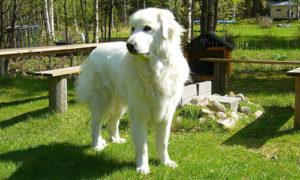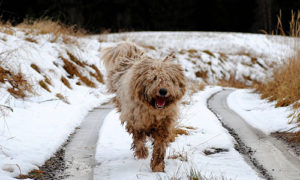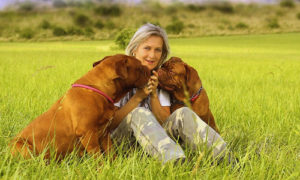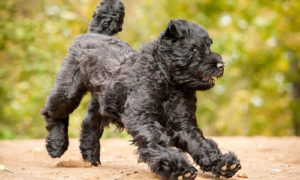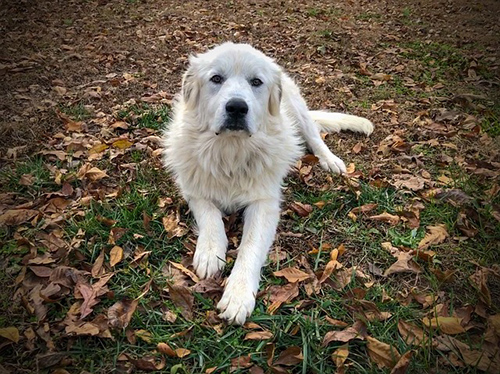
The Great Pyrenees is an ancient livestock protector that may have originated in Central Asia or Siberia. For centuries, breeders used it to protect flocks in the Pyrenees Mountains. Early settlers brought the Great Pyrenees to Newfoundland as guards and companions and may have contributed to the Newfoundland breed’s development.
General Lafayette imported a pair of Great Pyrenees to America in 1824. Although the dogs proved their merit as capable livestock guardians, there were no serious efforts to establish the breed in America until the 1930s. Also, the military used the dogs during both World Wars.
Great Pyrenees Breed Standard
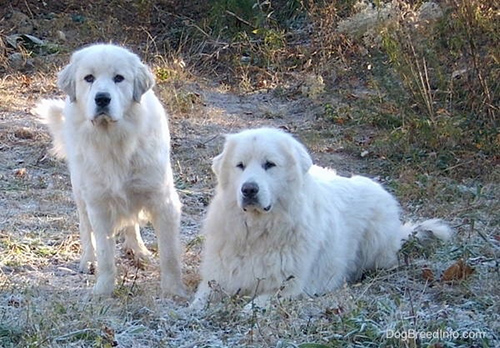
The Great Pyrenees is notable by its size, majesty, and thick white coat. Breeders designed these dogs for strenuous work in any weather or terrain. The bone is also moderate with good muscle, rectangular proportions, a moderately broad chest, and a broad back. Its plumed tail is carried over the back in a wheel when aroused. Their expression is completive, kindly, and regal. Pyr’s have a wedge-shaped head, and the muzzle equals the length of the back skull. These dogs possess strong jaws and a black nose. Between its dark brown, almond-shaped eyes, there is a slight groove, and its ears are small with rounded tips, set at eye level, and carried flat and close to the head.
Great Pyrenees Temperament
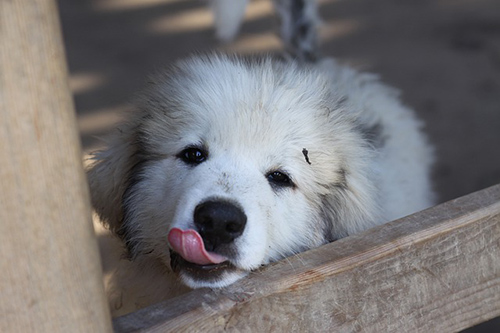
This dog is gentle, affectionate, and highly noted for its quiet and patient demeanor. The Great Pyrenees is a loyal and loving companion with its family but is typically reserved with strangers. It is a confident and fearless breed, with strong territorial and protective instincts; naturally vigilant, they make excellent watchdogs. However, they can be barkers, especially during the night. Males may not tolerate other dogs in the home. Strong-willed and independent, they need patient, consistent leadership.
Breed Facts
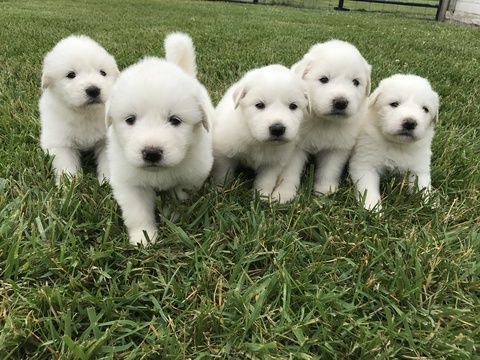
Activity level: The Great Pyrenees is not typically an excellent off-leash companion and requires sturdy fencing. This dog is a great candidate for carting and sled work.
- POPULARITY: Somewhat popular
- FAMILY: Livestock Dog, Flockguard
- AREA OF ORIGIN: France
- DATE OF ORIGIN: Ancient times
- ORIGINAL FUNCTION: Sheep guardian
- TODAY’S FUNCTION: Companion, livestock guardian
- OTHER NAME: Pyrenean Mountain Dog, Chien des Pyrenees, Chien de Montagne des Pyrenees
Grooming: Experts recommend weekly brushing. The Pyr’s coat should never be clipped in summer because it requires protection from the sun.
- Coat: The weather-resistant double coat consists of a long, flat, thick, coarse outer layer and a dense, fine wooly undercoat. Its hair is shorter and thinner on the face and ears and longer and more profuse on the neck and shoulders. Feathering is noticeable on the back of the legs and tail. Males carry more coat than females.
- Color: White or white with gray, badger, reddish-brown, or tan markings
Health
- MAJOR CONCERNS: CHD, patellar luxation
- MINOR CONCERNS: entropion, OCD, skin problems, osteosarcoma, cataract, chondrodysplasia, (dwarfism), panosteitis
- OCCASIONALLY SEEN: gastric torsion, otitis externa, spinal muscular atrophy
- SUGGESTED TESTS: hip, knee, (eye)
- LIFE SPAN: 10-12 years
- WEIGHT: male: 115 pounds; female: 85-90 pounds
- HEIGHT: male: 27-32 inches; female: 25-29 inches
Great Pyrenees Breeders and Buying Advice
Look for an energetic, sturdy, healthy puppy from a reputable breeder. Request to see both the mother and father of the puppy. Owners who are not ready for the demands of a puppy should consider a mature dog.
- Parent club: Great Pyrenees Club of America (www.gpcaonline.org); founded in 1934
- Regional clubs: You can find affiliated clubs by clicking “Club Information” and then “Local/Regional Clubs” on the GPCA’s website.
- Rescue: Information about the GPCA’s rescue program is located under “Rescue” on the club’s home page.
Great Pyrenees Price
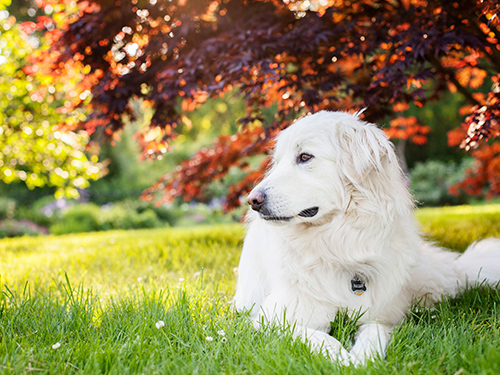
Adopting the Great Pyrenees is a lot cheaper than paying for one from a reputable breeder. Adoption cost for the dog could cost you anywhere from $150 to $300, which is most likely expenses for the dog’s care before you actually take it home. However, buying one from a breeder is not going to be cheap. Therefore, depending on the breeder’s status and the litter’s quality, Great Pyrenees puppies can cost you anywhere from $2000 to $8000.


